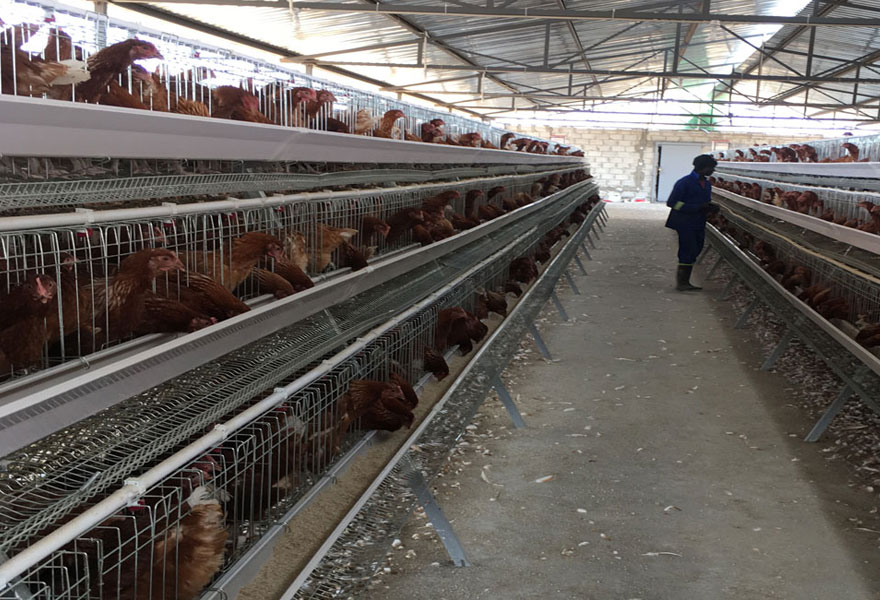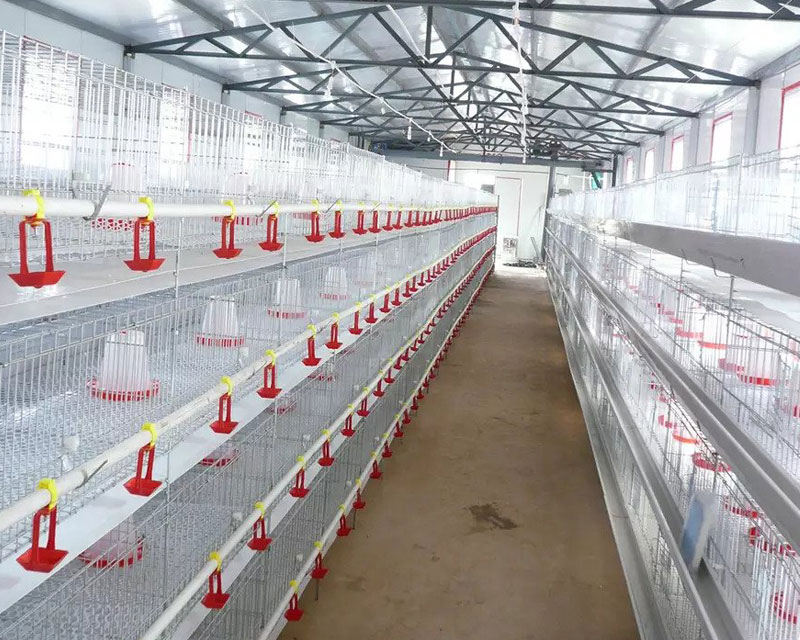Everything You Need to Know About RTL Cages
Introduction
An RTL (Ready To Lay) cage is a type of chicken cage used to house egg-laying hens. These cages are designed to provide a safe and comfortable environment for hens to lay eggs, as well as to increase productivity and efficiency in egg production. The use of RTL cages has become increasingly popular in the poultry industry due to the numerous benefits they offer to farmers and hens alike. One of the primary benefits of using RTL cages is that they improve the well-being and productivity of hens. By providing a controlled environment that is safe from predators and disease, hens are able to lay eggs in a stress-free environment. Additionally, RTL cages allow for easy collection and sorting of eggs, which leads to increased efficiency in egg production. In this article, we will explore the various aspects of RTL cages, including their design, benefits, types, and considerations for choosing and maintaining them. By the end of this guide, you will have a better understanding of how RTL cages can improve the quality and quantity of egg production, while also promoting the welfare of egg-laying hens.

RTL Cage Design
The design of RTL cages for egg-laying hens is an important consideration for maximizing the well-being and productivity of the hens. Here are some key features of RTL cage design:
Size and shape: RTL cages are typically rectangular in shape and can vary in size, depending on the number of hens they are designed to house. The cages should be spacious enough for the hens to move around and lay eggs comfortably.
Access points: RTL cages are designed with multiple access points to allow for easy collection of eggs and cleaning of the cages. These access points may include hinged or sliding doors, as well as removable floor sections.
Materials used: RTL cages are typically made with wire mesh and metal frames. The wire mesh should be strong enough to withstand the weight of the hens and their movements, while also providing proper ventilation and preventing injuries.
Capacity considerations: The number of hens per RTL cage depends on the size of the cage and the regulations set by governing bodies. The cages should be designed to maximize the number of hens per cage without compromising their welfare and comfort.
Benefits of Using RTL Cages
Using RTL cages for egg-laying hens offers a number of benefits that can improve the overall welfare and productivity of the birds. Here are some of the key benefits:
Improved safety and biosecurity: RTL cages can provide a secure environment for hens, protecting them from predators and disease. The wire mesh design of the cages also prevents hens from pecking at each other, which can lead to injury or infection.
Increased productivity and egg quality: Hens housed in RTL cages are provided with a consistent environment that promotes healthy egg production. The cages can also prevent eggs from being contaminated by feces or other debris, resulting in higher-quality eggs.
Reduced labor and material costs: Using RTL cages can reduce the amount of labor required to manage a flock of hens, as well as the amount of bedding and other materials needed to maintain their living environment. This can result in cost savings for farmers.
By taking advantage of the benefits of RTL cages, farmers can provide their hens with a safe and productive living environment while also maximizing their profits.
Types of RTL Cages
There are a few different types of RTL cages that are commonly used for housing egg-laying hens. Here are some of the main options:
Fixed RTL cages: These are cages that are permanently installed in a barn or other poultry facility. They are typically designed to house a specific number of hens and cannot be easily moved.
Removable RTL cages: These cages are designed to be easily moved or removed, which can be useful for cleaning or other maintenance tasks. They are often used in conjunction with a conveyor system that allows for efficient egg collection.
Alternative cage-free housing options: In recent years, there has been a growing movement towards cage-free housing for egg-laying hens. This can take many forms, including free-range or aviary-style housing that allows hens to move around more freely. Each of these types of RTL cages has its own advantages and disadvantages, and farmers should carefully consider which option is best for their specific needs and circumstances.
Considerations When Choosing and Maintaining RTL Cages
When selecting and maintaining RTL cages for egg-laying hens, there are a number of important considerations to keep in mind. Here are a few key factors to consider:
Regulations and standards: Different regions and countries have their own regulations and standards for the design and usage of RTL cages. It's important for farmers to understand these requirements and ensure that their cages meet all necessary criteria.
Compatibility with equipment and feeding systems: RTL cages should be designed with consideration for the equipment and feeding systems that will be used in conjunction with them. This can help to ensure that the cages are effective and efficient in supporting the health and well-being of the hens.
Maintenance requirements and procedures: Proper maintenance is critical for ensuring the longevity and effectiveness of RTL cages. Farmers should have a plan in place for regularly inspecting and cleaning their cages and should be prepared to make repairs or replacements as needed.
By taking these considerations into account when choosing and maintaining RTL cages, farmers can help to ensure the health and productivity of their egg-laying hens.
Conclusion
RTL cages offer a number of benefits for egg-laying hens, including improved safety, increased productivity, and reduced costs. By choosing the right RTL cage design and following proper maintenance procedures, farmers can help to ensure the health and well-being of their hens while also improving their bottom line. Key takeaways for choosing and maintaining RTL cages include understanding relevant regulations and standards, considering compatibility with equipment and feeding systems, and implementing proper maintenance procedures. As the agriculture industry continues to evolve, we can expect to see further developments in RTL cage design and usage. By staying informed and staying up to date on best practices, farmers can continue to provide the best possible care for their egg-laying hens while also improving their overall business operations. By considering these features of RTL cage design, farmers can ensure that their hens are provided with a safe and comfortable environment to lay eggs.

 4 Tier H Type Broiler Cage Project In South Africa
4 Tier H Type Broiler Cage Project In South Africa Layer Cage Project In Cuba
Layer Cage Project In Cuba H Type Layer Cage Project In Southeast Asia
H Type Layer Cage Project In Southeast Asia A Type Layer Cage Installed In West Africa
A Type Layer Cage Installed In West Africa Nigeria H Type Layer Cage Project
Nigeria H Type Layer Cage Project H Type Layer Cage Installed In Togo
H Type Layer Cage Installed In Togo